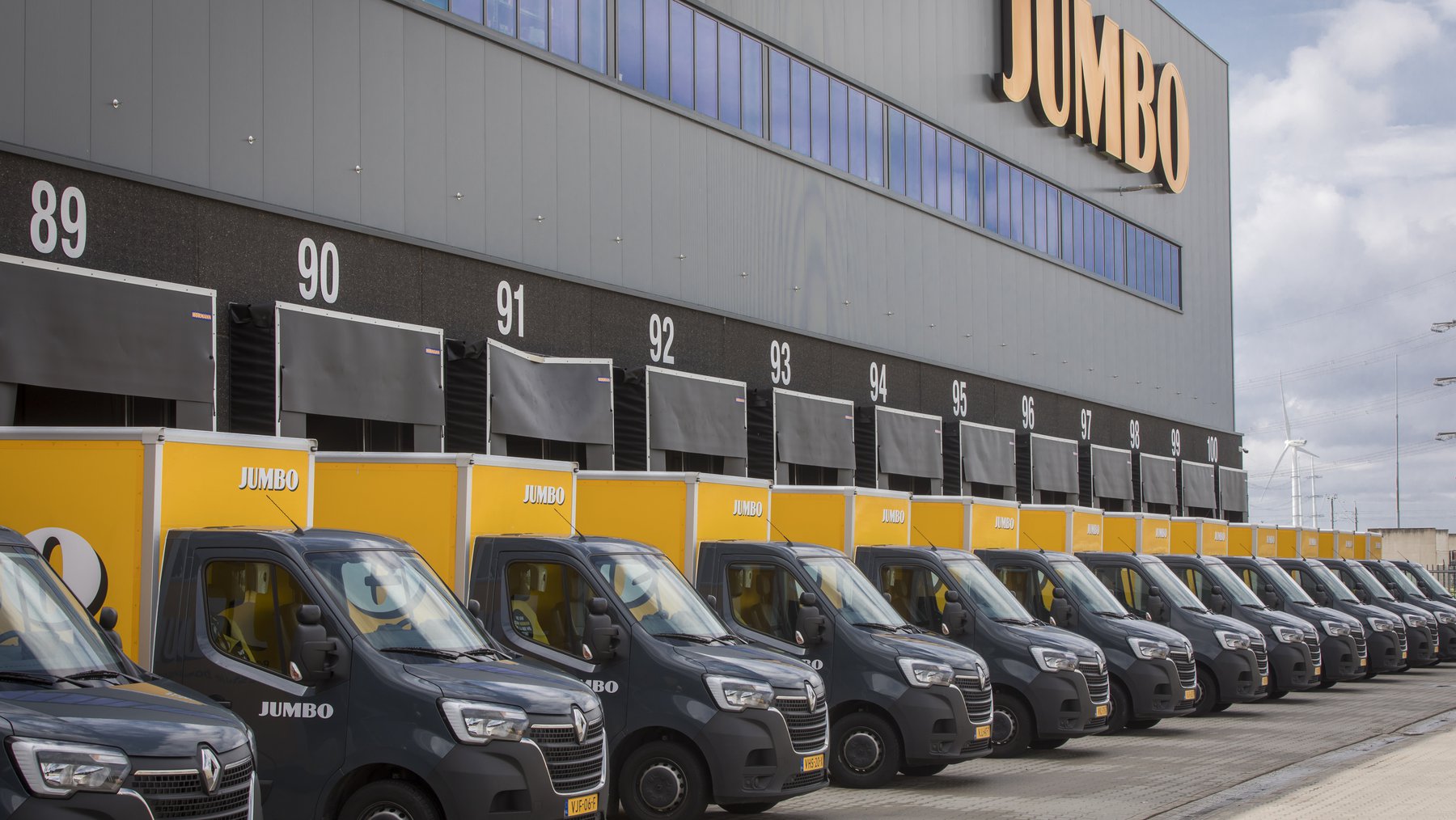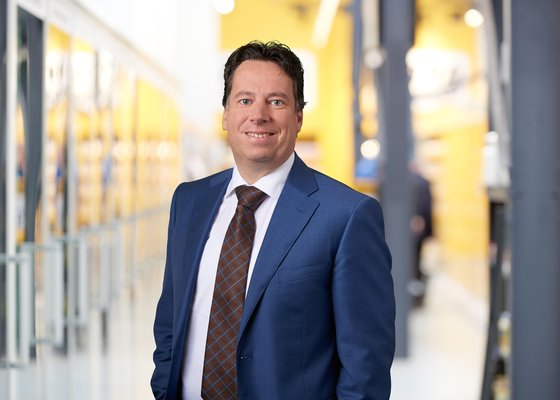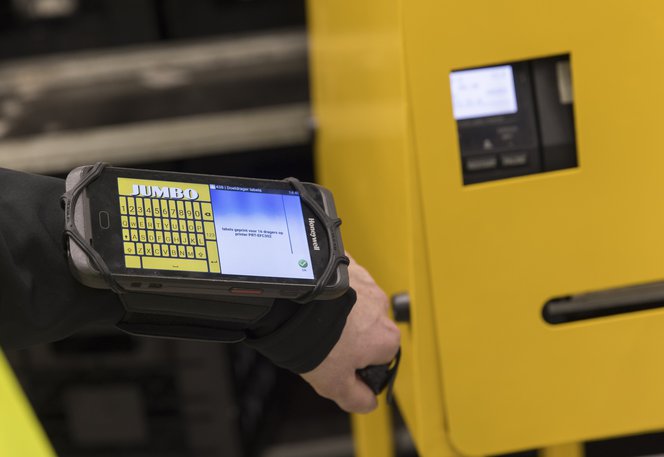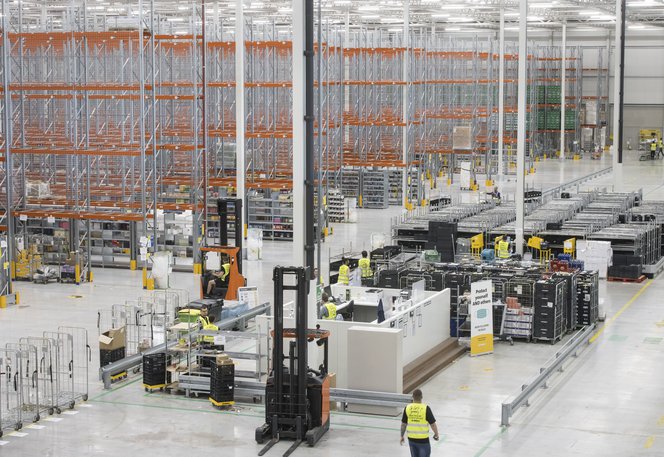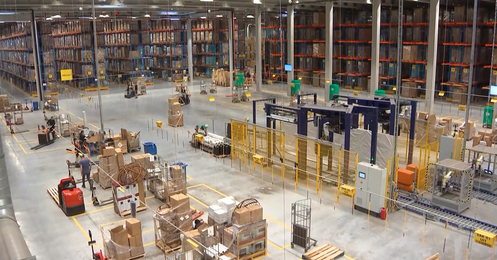Separate distribution network
In addition to the distribution network for supermarkets, Jumbo has built up a completely separate distribution network for its online channel in recent years. That was a conscious decision when its first EFC opened in Den Bosch in 2015. “One alternative was to arrange delivery from the stores, but not every store offers the full range. At our food markets, there are no fewer than 32,000 different items. That’s the range we want to offer to all our customers.”
Fulfilling online orders in existing distribution centres wasn’t an option either, says De Jong. “These were set up to handle trade quantities. But consumers only want to buy one or two packs of rice at once – not twelve. So, delivering from our existing distribution centres would mean having to reserve two picking locations for each item: one for trade and one for end consumers.”
Separate EFCs for the online channel is the best option, De Jong is convinced. “An EFC is a combination of a large store and a warehouse in terms of the technical, system and organisation aspects. This is where store logistics meets warehousing. That combination is crucial to making our operations efficient.”
A day and a half
The EFCs mirror the way stores work when it comes to design and restocking. The new one in Bleiswijk is equipped with pallet racks, with shelves at ground level. In fact, these are just like regular supermarkets, but on a blown-up scale. “We refill the stock from the existing distribution centres three times a day. What we deliver has to fit onto the shelf in one go to prevent us from having anything left over. We use the same forecasting replenishment software as we do for the stores. This helps us to identify and predict consumer behaviour.”
Jumbo uses the same principles used in every other warehouse for the layout of the shelves: fast-moving products at the front, slow-moving ones at the back. “When you’re in-store, you’ll see all the different types of pasta next to each other, so you can compare them. But that’s not how we do things in the EFCs. We only look at the turnover rate, so our staff don’t need to go back and forth all day.”
